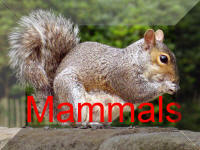Back To

SizeHead/body length: 67-96 mm, Tail 45-77 mm
Weight: 12-18gDescription
The largest of the British shrews It has a long pointed snout, small ears and tiny eyes.
Velvety Fur is short, dense, and jet black on the upper surface of the body, usually greyish white or yellowish underneath. Eyebrows and ear-tips often white having a tuft of white hairs on the ears and white hairs around the eyes. Stiff white hairs on the margins of the feet, and on the underside of the tail forming a keel are very distinctive. Teeth are red-tipped.
DietWorms, frogs and tadpoles.insect larvae, snails, crustaceans (freshwater shrimps, water slaters and caddis larvae ) , spiders, fish,it must feed continuously, or the shrew would die within a few hours. The shrew eats aprox its body weight in food per day. Saliva contains a pootry understood pmild "venom" which likely stuns large prey, Eg: frogs, to immobilise them. Their teeth are red-tipped.
Habitat
The Water Shrew is semi-aquatic often found in habitats close to water,such as banks of streams, rivers, ponds and drainage ditches, as well as reed-beds and fens. It is particularly numerous at water-cress beds. It can be found occasionally far from water in rough grasslands, scrub, woodlands and hedgerows, usually as young ones are dispersing. This shrew usually lives alone and each occupying a territory which is fiercely defended from others.
Breeding.
Breeding season is in late May and June in the main , variable with the with the weather. Shrews possess scent glands producing strong-smelling oily substances which other predators dislike . Communication is by scent and high-pitched squeaks and twitters. Male approach Female to see if they are ready to mate. If not they may fight instead.
The gestation period (time between mating and birth) of 24 days, 3-8 young are born in a chamber within the burrow of the females, the young in a nest woven from dry grass, usually in a burrow or under a log The new-born babies are hairless and blind . At aprox 4 weeks they make the first trip out of the nest often in procession, with the mother leading and the young following hanging on to the one in front. At 5 weeks they are full size and their mother drives them away. By this time the female may already be pregnant again. The young from an early litter may breed that same year. Mortality is high with many dying during the winter, killed by cold, starvation or predators.
Life-span:
Lives 14-19 months. Main predators of water shrews are tawny and barn owls, but kestrels, foxes and even predatory fish such as pike occasionally
Shrews are protected under Schedule 6 of the Wildlife and Countryside Act (1981)
